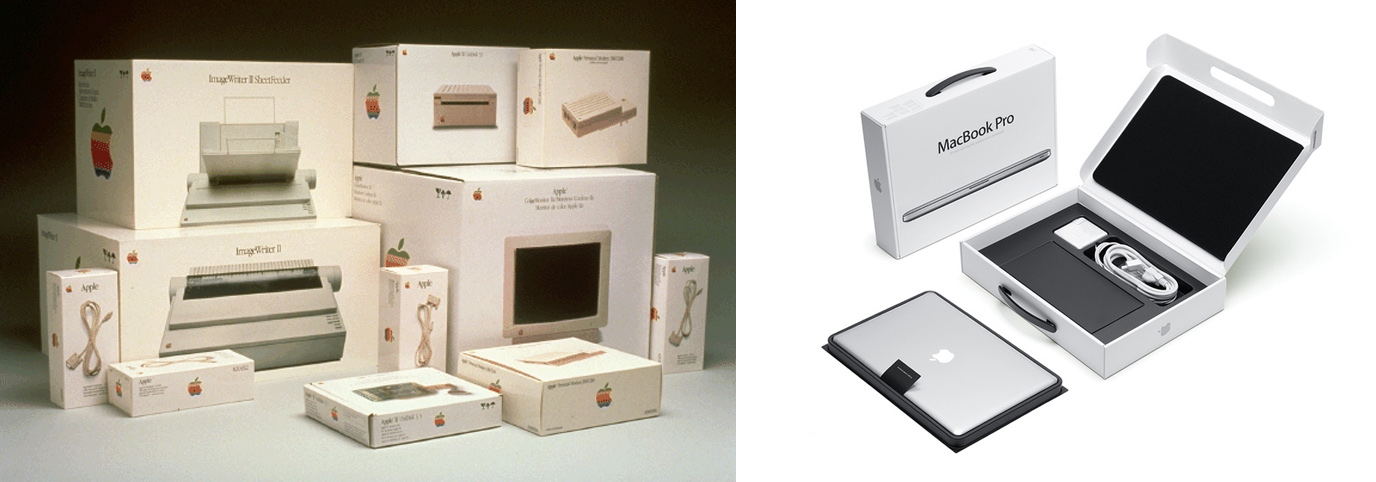Branding guru Tom Suiter on the power of simplicity, the importance of consistency, and knowing when to break the rules
Not many creative directors can say they worked with Steve Jobs back in the heyday that was Apple in the 80s, but Tom Suiter can. His brilliantly minimalist approach to design helped create the look and feel of the iconic brand’s original packaging and advertising which—a true testament to his design skills—hasn’t changed much since its inception. After Apple, Tom started his own agency, servicing clients such as Apple, Pixar, Nike, and Levis. His latest venture is Co-Founder and Chief Creative Officer of Enjoy, which partners with companies like AT&T and SONOS to provide same-day purchase, free delivery, and helpful in-home set up of their products. It’s a user-friendly business model that bridges the gap between instant online shopping and personalized services, and that spirit is—of course—perfectly reflected in the branding. We asked Tom about his past, his present, and his thoughts on the future (we’re looking at you, AI).
“My experiences at Apple taught me to boil an idea down to its absolute simplest form.”
1.
The term “brand storytelling” sounds simple, but as you know, it’s much more than nailing a good name, tagline, logo and marketing plan. How did you hone your craft over the years? What is an example of a success in this regard, in your opinion?
TOM SUITER: My experiences at Apple taught me to boil an idea down to its absolute simplest form. As an example, the look and feel of Apple’s packaging hasn’t changed much over the past 30+ years. From the package design system we created in 1984 to today’s Apple products, the packaging is still comprised of the same elements: the beautiful Apple logo, a gorgeous photo of a product, lots of negative space, and minimal typography. All of that minimalism adds up to an elegant presentation. Different CEOs, marketers, and designers have come and gone from Apple over the years, but the essence has always been the same: Minimal Simplicity.
I learned lots of lessons with Steve Jobs as the “client.” He would always ask, “Why do we need that? Can’t we say it in a simpler and shorter way?
I strive to keep everything I do today as simple as possible. At Enjoy we’re always asking questions of ourselves, “What’s the problem we’re trying to solve? Once we’ve isolated the problem, have we solved it in a simple and interesting way? Have we stripped away everything that’s not needed? Hopefully, what’s left is a great idea.
In the creative/marketing world, simplicity can have many “enemies,” with “decision by committee” being the biggest culprit. One person needs to have the final say – the CEO, the CMO, someONE. That was one of the biggest lessons I learned from working with Steve Jobs.
2.
Our successes define us as much as our failures. Your tenure at Apple was during their greatest time of growth. Can you share any successes and failures from that time that helped inform the next phase in your career?
TS: I was working at Apple in 1984, and we needed a good theme for our upcoming annual report. A small group of us, including Steve Jobs, hatched a fun idea. We asked, “What if we gave a Macintosh to famous people? What would they do with it?”
We decided to hand-deliver a new Mac to folks like Kurt Vonnegut, David Rockefeller, Jim Henson and Stephen Sondheim. Then, we spent some time showing them tips and tricks. We came back a month later to take their photo and publish their Mac handiwork. It was amazing to see what eleven incredibly diverse people did with a Mac.
Ironically, three decades later, my company Enjoy does a similar thing. We hand-deliver cool technology to people’s homes and offices, and then spend time sharing the latest tips and tricks with them. The only thing we don’t do is take their photo!
3.
Enjoy is a great concept, and part of the new wave of “luxury” shopping: convenience, customer service, instant gratification, and the promise of saving time. What inspired you the most when creating the look and feel of this brand?
TS: At Enjoy, we don’t make widgets. Our product is our people. So, it’s all about trust, because we’re sending a stranger into someone’s home to help them with their technology purchase. We created a branding system that’s about friendliness. The Enjoy logo itself depicts a smiling person. And our website features photos and videos of our employees, whom we call Experts. That way, customers get to meet the person delivering and setting up their product prior to their visit.
4.
We love leaders that acknowledge “you’re only as good as your team.” Any advice on team building in general?
TS: Everything we do here at Enjoy headquarters in Menlo Park is done in the open. Customer journey flowcharts, partner marketing campaigns, website wireframes, etc., are all pinned up on foam core boards and viewed in common areas. Everyone can see what’s going on with our partners. It’s fun to have an engineer come by and comment on an idea. It encourages everyone to feel like they are part of an overall initiative, not just a bystander.
5.
How important are Brand Books to you in the implementation of a Marketing plan?
TS: At Enjoy, everything we do from a creative standpoint emanates from the original brand guidelines we developed at our start—look, feel, voice, etc. We have very strict guidelines for co-branding with partners such as AT&T and SONOS.
However, we do break the rules occasionally, because we recognize the need to provide a few surprises along the way. A great example is using “logo abuse” to provide humor in communicating to our own employees. In all my years of branding, the logo guidelines would never allow anyone to alter the main logo. Since our Enjoy logo depicts a person smiling, we’ve created internal posters that use our “Enjoy Face” in fun and unusual poses: a hotdog for the smile to communicate an upcoming barbeque, a smile with vampire teeth to promote our Halloween party.
Brand guidelines are to be followed when appropriate, but breaking the rules a bit provides freshness and shows that we don’t take ourselves too seriously.
“Good branding and consistency will always breed trust and familiarity...”
6.
With the dawn of AI and VR on the horizon, how do you see branding evolving with these new platforms?
TS: Good branding and consistency will always breed trust and familiarity, no matter what the medium ends up being. I’m really impressed with what Google is doing with its recent introduction of AI, Hardware and Software products. The Google Assistant is really smart, and the product behavior aligns really nicely with Google’s overall branding (the four little blinking lights on the Google Home Mini mimic the four colored dots we see in Google’s TV advertising). Very subtle examples, but it’s good to see that Google’s looking at the entire ecosystem, and how consistent branding can tie it all together.
A few quick ones:
Favorite podcast: Masters of Scale with Reid Hoffman
Favorite inspirational quote: “Think Different”
Best moment working with Apple: Viewing the rough cut of “1984”.
The thing you remember most about Steve Jobs: He was a thoughtful, loyal, caring person who loved to have a good laugh.
Here’s that classic Apple ad that Tom was talking about.
Watch Tom speak about Apple’s design team, then and now.
Haven’t seen the Google Home Mini? Here’s a glowing review.
It’s about time: Sonos is getting in the VC game.
UP NEXT: ADAM ALTER







